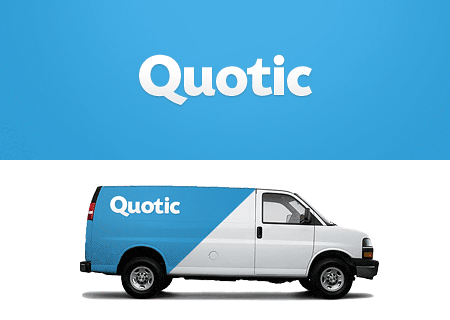“How to Land the Best Products to Review” plus 1 more |  |
| How to Land the Best Products to Review Posted: 29 Sep 2011 01:07 PM PDT This post is by Simon Worrall of CM Copywriters. Each year, companies spend hundreds of millions on branded T-shirts, mugs, stickers, and pens. Go to enough conferences and you'll amass terabytes of memory sticks and a wardrobe of T-shirts, hoodies, and caps. Promotional products are also a way of making money. In 2008, Europe's soccer elite scored around $800 million from merchandizing. And now online brands such as GitHub and Mozilla sell merchandize online. Most promotional products, though, are given away free. 20th Century Fox have done this in a clever and quirky way. They sent A.V. Club a faux-fox-tail tie to promote Fantastic Mr. Fox. "As promotional gimmicks go, it's oddly appropriate, if a little sick," said the entertainment publisher in a post discussing promotional products they'd received. But not everyone's use of promotional products is quite so fantastic. Do you really think promotional pens are churning out a strong return on investment? Spend $100 in giving away pens and sell $1,000 in products! The answer is a clear no: the recession hit the merchandizing industry like a punch in the face. Not all promotional products quiver when they're asked to justify the cost of being free; there's one product that fries memory sticks, bursts pens, and shrinks hoodies. And, best of all, companies already have thousands stocked in their warehouse. It's time they stopped buying branded umbrellas and started giving away their products for free. Today companies must be more surgical with their marketing spend, and that's where you can help. There's never been a better time to get companies to give you their products so you can write a review. Provided you write honestly, and never promote brands blindly, you can become an important source of product information in your industry. This will bring new readers to your blog, and strengthen your credibility with advertisers. Make your caseWhen online retailers give away their products, they want to measure results and get a tangible return. Your job is to convince them that you can deliver this. The first point to make is that if you blog about a product, your followers will buy it. Best of all, you can deliver continuous sales results. There will be a surge when you first post the review, and then a stream as more readers find it in your archives. Be careful though. Don't commit to writing positive reviews before you have tried the product. There's no better way of poisoning your blog than endorsing poor products. You will bring traffic to companies' sites. Of course, linking to their site will help them get traffic from Google, but it's more than that:
Next, you can help them with their conversion rates. If someone goes to a retailer's site after reading your independent product review, they're more likely to buy the product. This is especially the case if your blog is well established and has a good reputation; if they trust you, they trust the company. Finally, companies worry about defending their brands. Their worst nightmare is some crazy customer ranking for their name. Good product reviews from established blogs help them to avoid this; you're part of their insurance policy! Companies like influencersIf a retailer sells a physical product, they don't make money by giving it away for free. They make money from the way that people react to the product. The problem is that most consumers don't react. They read and follow; they don't blog or tweet. As a blogger, you're an influencer; that makes you one of the chosen few. If you can make a company understand that your blog is one that matters, one that people listen to, they are much more likely to give you products to review. It's even better if your followers are influencers themselves. If you are in this position, you don't need to have a hundred thousand readers to create enormous value. For instance, every political pundit in Washington reads ABC News' The Note, despite its comparatively low readership. By influencing The Note, you can influence The New York Times, The Wall Street Journal and The Washington Post. If you have this type of audience, make sure that the retailer knows this. Otherwise, they will just look at your site statistics, and undervalue your influence. Here's another idea if your audience is influential: be bold, ask the company for several copies of the product, and run a contest. Giving away free products to your followers is a great way of rewarding their loyalty and encouraging them to stick around, and the business will be happy to get people thinking about their product. Understand the retailer's business caseHere's a secret: the price of a product doesn't reveal much about the cost of making it. Price is the value that people place on the product; cost is the raw materials and labor that go into the product in the first place. When you approach a retailer, you need to think about product cost, not the price. Have you ever seen a software sales letter that ends with $300 in free bonuses? There's a reason why you're getting them free: there's no cost to making each new product. There's a one-time cost and barely any costs thereafter. Do some basic arithmetic before approaching a prospect. Can you drive enough sales to make it worthwhile for them? How much will it cost them to give you one of their products, and will they get enough money back? Unless you can show them you can do this, you're going to walk away empty-handed. Getting a $10 bunch of flowers from a florist is easy. But unless you're filming the latest James Bond movie, Aston Martin won't be sending you a car anytime soon. MetricsYour site metrics aren't everything, especially if your blog is highly influential. But, retailers will want to see your metrics. Here are some of the key metrics they will use to evaluate your reach.
All of these statistics have some value, but they all have flaws as well. Therefore, rather than relying on one, companies generally consider them as a whole. How to contact companiesGet in touch with companies directly. Find the right marketing contact on their corporate website and send them an email. If you can't find this, give them a call and ask for the best person to speak with. This will usually be a public relations or marketing employee. Here's an example of the type of email you can send: Re: Business Proposal Hello Name Surname, Good morning. I saw your recent press announcement about the new range that you're launching next month, and I was particularly interested in your 1960s-inspired hard-sided luggage. Your timing seems perfect—'60s fashion is everywhere at the moment, and my readers love it! I have written a fashion blog for several years now, and it has grown to about 30,000 followers. I had a huge amount of comments recently on several posts I made on '60s fashion, and also on another post about traveling in style. Putting these together, it seems to me that my readers would be very interested in your new range. Would you be interested in providing me with your product so that I can review it and share feedback with my readers? I was also thinking of running a prize contest after the review; a lot of my readers are in the fashion industry themselves and this would be a great opportunity to spread the word! I would be very happy to give you more information about my blog and the type of readership I have. You can also read my blog at Blog Address. I'm excited about this idea, and hope that you are too. I'm looking forward to hearing from you! Kind regards, My Name T: 123-456-7890 Product reviews and contests are a great way to increase your followers, and keep them coming back. Getting companies to give you their products takes a little homework, but you can do it—and you'll get some great products for free! Simon Worrall is a copywriter at CM Copywriters. The UK-based agency provides tone of voice and web copy services to a global roster of clients. Originally at: Blog Tips at ProBlogger How to Land the Best Products to Review |
| Principles of Effective Blog Design Posted: 29 Sep 2011 07:03 AM PDT This is a guest post by Peep Laja, CEO of Traindom. People judge books by the cover, and other people by their looks. Take a look at these two men: Now answer these questions (you can’t choose “neither”):
… and so on. You don’t know anything about these men. Yet you make assumptions and can even take decisions based on their looks. What does that have to do with your blog? Everything!
Dr. Brent Coker studied the impact of attractive websites on human behavior. Websites that are more attractive and include more trimmings create a greater feeling of trustworthiness and professionalism in consumers. People judge your blog based on the designIf somebody knows you well, they don’t care about your looks that much. If they see you for the first time, looks matter a lot. The content of your blog is always more important than the design, but you need to woo people with your design first. You draw them in with design, and keep with content.
The following advice will help you design a better blog and this in turn will help you sell more (whether you’re selling free sign-ups, coaching sessions, products, or whatever). Make it easy to find stuffWho is your site for? What are they looking for? Value function over aesthetics: 76% of people want it to be easy for them to find what they want. What kind of blog layouts are they used to using? Remember, people spend most of their time on other websites, not yours. Avoid totally new and never-seen-before layouts. Your car isn’t unique, and your house might not be either. For return visitors, search is vital. Make sure your search box is clearly visible (above the fold), at least 27 characters wide and that the search can actually find relevant stuff. WordPress’s built-in search is very poor, and it lists the results by date, not relevance. Use a plugin like Relevanssi to improve it tremendously. Less is moreUse plenty of white space. Don’t fill every possible space with banners, messages, or whatever else. The more breathing room there is, the easier it is for visitors to consume the information you produce. Here’s an excellent post on using white space. Rule of thirdsYou should never publish a blog post without an image. A visual communicates your ideas much faster than any text can. The best images follow the rule of thirds: an image should be imagined as divided into nine equal parts by two equally-spaced horizontal lines and two equally-spaced vertical lines, and that important compositional elements should be placed along these lines or their intersections. See how the image on the right is more interesting? That’s rule of thirds in action. Clarity mattersContent and clarity are important parts of the design. What is this place? What can I do here? How is it useful? First-time visitors need to get answers to these questions within their first seconds on your blog. Make sure it’s possible to clearly understand what your blog is about and who’s it for—no matter which page the visitors land on. The better you build a connection between your reader and your blog, the higher the chances they will stick around. People start reading your website from the top-left corner. The fixations go in order from left to right. That’s where you want to place the most important information. Readability and typographyThe text on your blog should be beautiful and easy to read. Use large fonts (at least 14px), short lines (see the width of Tynan’s blog posts), and lots of white space. Create a new paragraph every three or four lines, and a subheading after every two to three paragraphs. The best blog typography lends a meaningful purpose to the content while triggering emotions in your readers in the process. Besides picking a beautiful web font, make sure that different text elements have a different look and feel (main headings, subheadings, regular text, italic text, quotes, lists, and so on). Here are 10 Examples of Beautiful CSS Typography and how they did it. Also take a look at Space, a WordPress theme designed for reading. You can use TypeTester to test and compare different fonts, sizes and so on. Invite repeat visitsOver 95% of people won’t buy anything on their first visit. Hence you should not even try to sell to your first-time visitors. Instead, try to get them to come back so you can build a relationship and add value before you make them an offer of any kind. How can you do that?
Make sure you focus on one of these options most (email list is best), but give a choice of up to three options. This is how aext.net is doing it: Signup formsThe best signup forms:
The more fields people have to fill in to subscribe, the less likely they’ll be to do it. Email personalization by name is not working as well anymore anyway, so you might as well not ask for those details. The One Question, a site helping people find their life purpose, has 30% of new visitors sign up via this form every day: Why is it so effective? The form offers the exact thing people search for on Google to come to the site. If you offer people what they want, they are happy to sign up. Text logo: 1% pain, 99% gainYou don’t need to hire a fancy designer and pay top dollar for your logo. Even huge budgets might not make much difference here. You can create a beautiful logo using text. Pick a beautiful fontand a background color you like—and voilà! A designer from Edicy took just 15 minutes to create this logo for an imaginary company (Tajo Oja): Careful with stock photosStock photos seem like a good idea, but 90% of them are utterly fake and cheesy. Have you googled “women laughing alone with salad” recently? How can you expect to be taken seriously if you feature suits shaking hands and half-naked women measuring each others waists? Some people advocate that given the proliferation of low-cost cameras and smart phones, your own photography should be used rather than stock. I agree. Can’t decide on the color scheme?Let’s say you like the color red, but can’t decide what other colors match your favorite shade of red. You don’t have to guess or ask your friends. You can use online color matching tools for this: How often should you revamp your blog design?That’s actually not the right question to ask. You should only change it if there’s a real need behind it. What’s not working for you today? Put the goal first, and the redesign second. Will the new design help you get more clicks to your ads? Increase pageviews or signups? Ideally you’ll see your blog as a living, breathing organism that never stops evolving. Constantly A/B test your most important pages and design elements, and measure the improvement. You can only improve what you measure. Peep Laja is the CEO of Traindom, online software for building online courses and membership sites. Originally at: Blog Tips at ProBlogger Principles of Effective Blog Design |
| You are subscribed to email updates from ProBlogger Blog Tips To stop receiving these emails, you may unsubscribe now. | Email delivery powered by Google |
| Google Inc., 20 West Kinzie, Chicago IL USA 60610 | |












.jpg)
0 comments:
Post a Comment